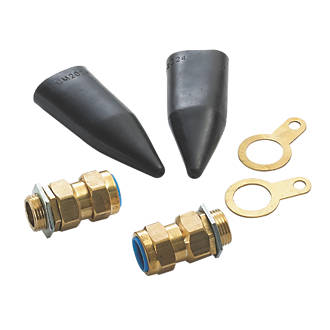Just accept that it is one of your unknown unknowns
@ban-all-sheds - qualified Electricians know not to do it. You have learnt something new today.
OK - I don't expect that anybody will be surprised to see that your desire to avoid embarrassment by refusing to answer a question is always going to be your only concern.
So I'll stop asking you, and instead tell you the truth, based on actual facts.
For normal environments, such as storage in warehouses or non-temperature and humidity controlled environments, there should not be more than 0.25 V difference in the anodic index. For controlled environments, in which temperature and humidity are controlled, 0.50 V can be tolerated. For harsh environments, such as outdoors, high humidity, and salt environments, there should be not more than 0.15 V difference in the anodic index.
The difference between copper and galvanised steel is 0.85 and between brass and galvanised steel it is 0.8.
So yes, copper is marginally worse, but both are high.
You are ignoring the fact that a copper conductor is also captive within that terminal.
It is not a significant fact.
If corrosion between copper and armour is a concern, then so, at less than 6% difference will be corrosion between brass and armour. And vice-versa if there's no or little concern about the contact between armour and gland.
What difference does that make?
The answer to that, Risteard, is "virtually none".
Copper and steel in the same terminal will react with each other. I already pointed this out.
And so, Risteard, will brass and steel, to almost the same extent.
Ah, I thought the objection was steel armour in brass terminal.
The only people who would not object to that but would object to copper and steel in contact are those who have not managed to think about the fact that there is very little difference between the two scenarios.
I realise that you are not an Electrician
@ban-all-sheds but every Apprentice-trained Electrician knows of the dangers of combining dissimilar metals. Indeed they will have been taught this as part of their theory.
The brass of a SWA gland and the armour it clamps are dissimilar metals combined.
Shall we all just take it as read that you will never be willing or able to explain why you are concerned about the corrosion risk when armour comes into contact with copper but not when it contacts brass?
You got it wrong, Risteard, and your evasion has not concealed that.



